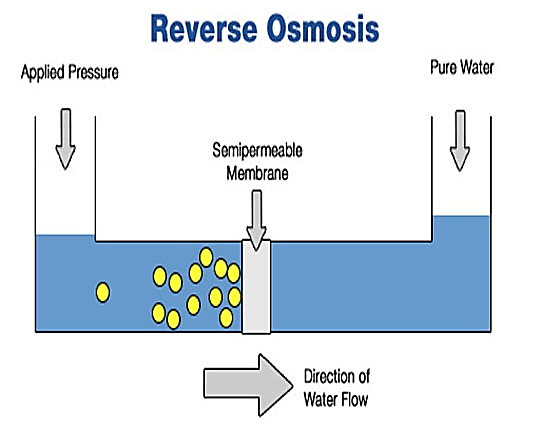
Seawater Desalination with Reverse Osmosis Plant
All Reverse Osmosis vegetation are basically Desalination Vegetation but desalination is remaining referred to sea water Commonly.As sea h2o has extremely significant TDS requires really significant tension to force sea water by way of membranes which are various then brackish water membranes.
Reverse Osmosis Plant Information:
A reverse osmosis plant is usually a producing plant, where water is purified and desalinated by forcing water via a membrane, typically called a reverse osmosis method. Drinking water produced by plant RO could be utilized for numerous reasons like desalination, wastewater treatment method, along with the reclamation of dissolved minerals.
RO Plant Description
A median drinking water RO plant system necessitates 6 KW hrs of electrical power to desalinate a single cubic meter of water. Reverse osmosis h2o vegetation needs many different pre-therapy techniques together with softening, DE chlorination, and anti-scale cure. Adhering to pre-remedy, high amounts of stress send drinking water through a semi-permeable membrane, which retains all contaminants besides h2o.
RO Plant Design and style
To enhance the effectiveness and life of the Reverse Osmosis plant, productive pretreatment in the feed h2o is required. Array of the best pretreatment will maximize effectiveness and membrane life by cutting down:
Fouling
Scaling
Membrane Degradation
RO plant style is consisting of:
Analyzing pretreatment requirement of Reverse Osmosis Plant
In case the feed h2o has traces of large metals, it is very suggested to dose some chlorine to change the dissolved significant metals to physical kind, the media filter will filter a lot of it inside a ro drinking water purifier plant.
Reverse Osmosis Plant Array of membrane
Membrane components are a vital Element of RO plants. The proteins (mainly polyamide) that makeup membrane aspects change based on the ending clarity and consumption drinking water seawater or brackish drinking water and so forth
Waterman engineers Australia RO plant for seawater desalination
Waterman Engineers in Australia has intended a Reverse Osmosis (RO) plant for seawater desalination, which features several benefits above other desalination approaches. Here are several essential advantages of their RO plant:
Electricity Effectiveness:
When compared to other desalination procedures like thermal distillation, RO necessitates fewer Electrical power. Waterman Engineers' RO plant makes use of Innovative membrane know-how, letting it to function at reduce pressures and decrease overall Electrical power intake.
Environmental Affect:
RO generates significantly less brine discharge in comparison to thermal methods, lessening the effect on maritime ecosystems. This aligns with Australia's center on environmental sustainability and conservation.
Large H2o Purity:
The RO course of action efficiently gets rid of salts, minerals, and impurities, making higher-high-quality freshwater that meets stringent ingesting water criteria. This reliability is important for supplying Harmless and thoroughly clean drinking water to communities.
Modular Design:
Waterman Engineers' RO plant employs a modular style and design, permitting for scalability and suppleness. This is especially advantageous for places with different h2o demands, as modules might be included or adjusted accordingly.
Diminished Footprint:
RO crops generally Possess a scaled-down Actual physical footprint compared to thermal desalination plants, which regularly call for considerable infrastructure for heating and cooling procedures.
Quick Commence-Up and Shutdown:
RO vegetation might be started off and stopped rather rapidly, enabling for far better responsiveness to shifting drinking water calls for and emergencies.
Decrease Chemical Utilization:
Not like Several other desalination procedures, RO involves less chemical substances for operation and cleansing, reducing chemical-linked environmental worries.
Consistency in Efficiency:
The RO method is significantly less sensitive to feedwater high-quality fluctuations than other procedures, guaranteeing a more consistent general performance after some time.
Value-Usefulness:
Whilst Original expenditure fees can be major, RO plants are likely to own lower operational and servicing fees in the long run when compared with thermal techniques.
Reverse Osmosis (RO) is usually a water purification course of action that utilizes a partly permeable membrane to eliminate ions, undesirable molecules, and bigger particles from ingesting water. By making use of tension to overcome osmotic strain, it will allow the passage of water molecules even though rejecting contaminants, thus creating clear h2o on one side on the membrane and concentrated impurities on one other.
The Operating theory of a Reverse Osmosis (RO) plant consists of implementing pressure to some saline Remedy to pressure drinking water molecules via a semi-permeable membrane. This membrane will allow only h2o to go while rejecting salts, contaminants, and impurities, resulting in purified water around the permeate side as well as a concentrated Resolution of contaminants to the brine aspect.
The benefits of Reverse Osmosis include things like developing superior-quality, clean up h2o by taking away contaminants, staying successful and value-powerful after a while, requiring minimal chemical use, and being adaptable to numerous scales of operation from little house systems to significant municipal vegetation.
RO plants have changed Demineralisation (DM) vegetation since they often offer a far more effective and price-powerful Answer for h2o purification. RO techniques Do not involve the regeneration chemical substances that resin-based DM vegetation do and Desalination Plant Manufacturer can take away a broader selection of contaminants, together with dissolved solids and microorganisms.
Waterman Engineers Australia very likely uses Reverse Osmosis (RO) vegetation for seawater desalination by forcing seawater via a semi-permeable membrane to remove salt and various impurities. This process makes fresh, potable drinking water within the ocean, addressing water scarcity and delivering a sustainable supply for different requires.